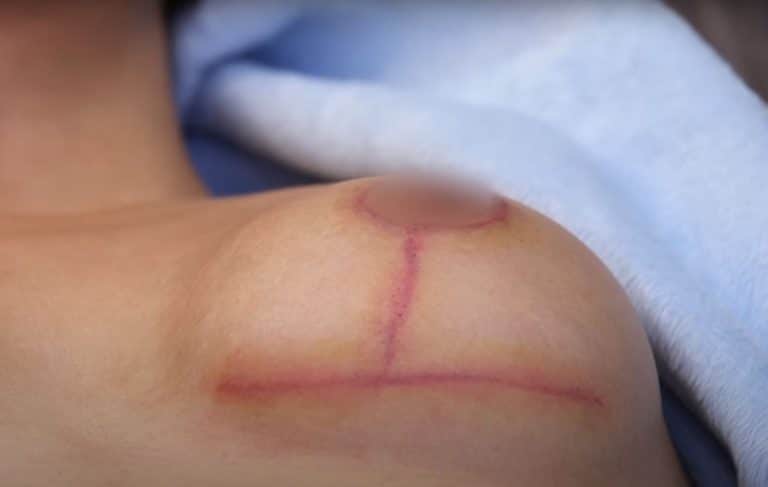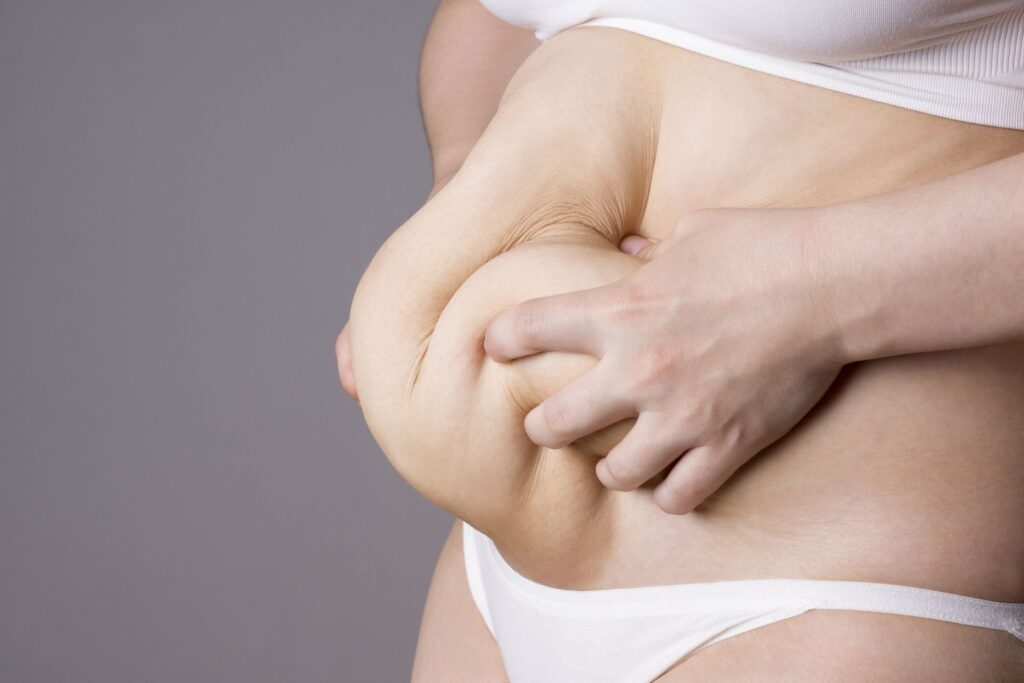Did you know that 70% of people with a buffalo hump, a condition often seen in females, seek cosmetic solutions due to its prominence? Buffalo hump liposuction before and after results can be life-changing for female patients with prominence. This procedure targets the stubborn fat deposit at the back of your neck, enhancing your posture and confidence through buffalo hump lipo. Many individuals, particularly females, struggle with this issue, often feeling self-conscious about their appearance and considering buffalo hump lipo for hair removal.
Buffalo hump liposuction offers a quick fix to this problem. The procedure is straightforward, and recovery is typically swift. Imagine seeing significant improvements in just a few weeks! This blog post will cover everything you need to know about buffalo hump liposuction, from preparation to recovery, ensuring you’re well-informed before making any decisions.
Key Takeaways
- Effective Solution: Buffalo hump liposuction is a proven method to remove excess fat from the upper back, offering a more contoured appearance.
- Procedure Clarity: The step-by-step guide provides a clear understanding of what to expect during the surgery, ensuring patients are well-prepared.
- Visual Evidence: The before and after photos in the visual gallery highlight the significant improvements and potential results of the buffalo hump lipo procedure.
- Recovery Tips: Following the outlined recovery journey can help minimize downtime and ensure a smoother healing process.
- Consultation Importance: Consulting with a qualified surgeon is crucial for understanding personalized risks, benefits, and costs associated with the procedure.
- Cost Factors: The cost explained section breaks down the financial aspects, helping patients budget and plan for the procedure effectively.
Understanding the Procedure
PRECISION SCULPT® Technique
The PRECISION SCULPT® technique uses a combination of laser and radiofrequency energy. This method targets fat cells precisely. It breaks down fat deposits effectively. The laser melts the fat, making it easier to remove. Radiofrequency tightens the skin after fat removal.
This dual approach ensures better results. Patients notice smoother contours and less sagging skin. The procedure is minimally invasive. Recovery time is shorter compared to traditional methods.
Awake Liposuction
Awake liposuction happens under local anesthesia. Patients stay awake during the procedure. This increases safety and comfort. There are fewer risks compared to general anesthesia.
Local anesthesia numbs only the treatment area. Patients can communicate with the surgeon throughout the process. This makes adjustments possible in real-time, enhancing precision.
Awake liposuction also reduces recovery time. Patients experience less nausea and dizziness post-surgery. They can return to daily activities sooner.
Dorsocervical Fat Pad Focus
Removing the dorsocervical fat pad is crucial for treating a buffalo hump. This fat pad accumulates at the back of the neck and upper back area. It creates a noticeable bulge, affecting appearance and posture.
Surgeons focus on this specific area during buffalo hump liposuction. Precision Sculpt® helps in targeting this localized fat deposit accurately.
Patients often feel relief from physical discomfort after removing this fat pad. Improved posture and reduced neck strain are common benefits.
Step-by-Step Guide
Initial Consultation
The first step is the initial consultation. This meeting with the surgeon determines if an individual is a good candidate for buffalo hump liposuction. Doctors evaluate the size and location of the hump. They also check overall health and medical history.
Patients discuss their goals during this visit. Surgeons explain what to expect from the procedure. They may take photos of the back and neck for reference.
Preparation Steps
Preparation begins weeks before surgery. Patients might need to adjust their diet or medications. Doctors often advise stopping blood thinners like aspirin a week before surgery.
Smoking can affect healing, so patients should stop smoking at least two weeks before and after surgery. Eating a balanced diet helps in faster recovery.
Procedure Day
On the day of the procedure, patients arrive at the clinic or hospital early. A nurse checks vital signs like blood pressure and heart rate.
Before starting, doctors mark areas on the back and neck where they will perform liposuction. Anesthesia options include local anesthesia for smaller humps or general anesthesia for larger ones.
During the procedure, surgeons make small incisions near the hump. A thin tube called a cannula is inserted through these incisions to remove excess fat. The process usually takes one to two hours.
Immediate Post-Operative Care
After surgery, patients spend some time in a recovery room. Nurses monitor vital signs as anesthesia wears off.
Surgeons provide detailed post-operative care instructions. These often include wearing compression garments around the back and neck to reduce swelling.
Patients should avoid strenuous activities for at least two weeks post-surgery. Light walking is encouraged to improve blood circulation.
Visual Gallery
Before Photos
These images show patients before buffalo hump liposuction. The buffalo hump area is visible on the upper back. Patients often feel self-conscious about this appearance.
One common feature is the accumulation of fat tissue at the lower neck. This can be due to various reasons, including genetics and weight gain.
After Photos
The after photos highlight the results of buffalo hump liposuction. The difference in appearance is clear. The upper back and lower neck areas look more sculpted.
Patients report feeling more confident post-procedure. The contour of their upper back significantly improves.
Technique Showcase
The PRECISION SCULPT® technique is used for these transformations. It targets specific fat deposits with high accuracy. This method ensures minimal damage to surrounding tissues.
Patients benefit from a quicker recovery time compared to traditional methods. The precision allows for better sculpting of the affected area.
Female Patients
Female patients often seek this procedure for aesthetic reasons. They want a smoother contour on their upper back. Many women experience significant improvement in their posture and overall silhouette.
Before and after photos of female patients show dramatic changes. Their upper backs appear more streamlined and natural-looking.
Male Patients
Male patients also undergo this procedure for similar reasons. They aim to remove excess fat from their upper backs and lower necks.
After photos reveal a more defined upper body structure. Men report increased comfort in daily activities and improved self-esteem.
Recovery Days
Recovery typically takes a few days to weeks, depending on individual cases. Post-surgery care includes managing swelling and bruising around the treated area.
Patients usually return to normal activities within a week or two. Following proper aftercare instructions speeds up healing time.
Skin and Hair Care
Post-procedure skin care is crucial for optimal results. Keeping the skin moisturized aids in recovery and reduces scarring risks.
Hair around the treated area should be kept clean to prevent infections. Proper hygiene helps maintain the health of both skin and hair during recovery.
Diverse Profiles
This gallery showcases patients from various backgrounds and body types. Each person has different needs, but all benefit from buffalo hump liposuction.
The variety demonstrates that this procedure works across diverse profiles effectively. Every patient shows noticeable improvement in their upper back contours post-surgery.
Recovery Journey
Immediate Phase
Patients often experience swelling and bruising after buffalo hump liposuction. The surgeon usually makes a small skin opening to insert the cannula. This opening needs proper care to prevent infections. Clean the area daily and apply prescribed ointments. Swelling typically peaks within 48 hours but starts reducing afterward.
First Week
During the first week, patients should rest as much as possible. Avoid strenuous activities. Some discomfort is normal, but pain can be managed with medication. Wearing a compression garment helps reduce swelling and supports healing. Most patients notice reduced bruising by the end of this week.
Two Weeks Later
By the second week, many patients start feeling better. Swelling continues to decrease, and mobility improves. Light activities like walking are encouraged to promote blood flow. However, avoid heavy lifting or intense exercise until cleared by your doctor.
Returning to Work
Recovery time varies between individuals. Generally, patients can return to work within one to two weeks post-procedure. Desk jobs may require less downtime compared to physically demanding jobs. Always follow your surgeon’s advice on when it’s safe to resume normal activities.
Full Recovery
Complete recovery from buffalo hump liposuction can take several months. Most swelling subsides within six weeks, but final results may not be visible until three to six months later. During this period, continue following post-operative care instructions for optimal results.
Patient Testimonials
Many patients share positive recovery experiences after buffalo hump liposuction:
- Sarah: “I was back at my desk job in ten days! The first few days were tough, but wearing the compression garment made a big difference.”
- John: “The support from my healthcare team was incredible. They guided me through each step of recovery.”
- Emily: “Seeing the before and after photos kept me motivated during recovery.”
These testimonials highlight the importance of comfort and support throughout the process.
Lasting Results
Permanent Change
Buffalo hump liposuction can provide a permanent change. The key is maintaining a stable weight and healthy lifestyle. Excess fat in the buffalo hump region is removed during the procedure. This means that if weight remains steady, the results are long-lasting.
Before and After
Long-term before and after images show sustained results. Patients often see a significant reduction in the prominence of the buffalo hump. These images highlight how effective buffalo hump lipo can be. They also demonstrate how important it is to maintain results through proper care.
Improved Posture
Patients frequently report improved posture after the procedure. Removing excess fat from the neck and upper back allows for better alignment. This improvement can reduce discomfort and enhance overall well-being.
Boosted Confidence
Many patients experience increased confidence following buffalo hump liposuction. They feel more comfortable with their appearance. This boost in self-esteem often leads to positive changes in other areas of life as well.
Consultation Insights
Goals and Expectations
A thorough consultation is crucial. It sets the stage for successful buffalo hump liposuction. Patients discuss their goals and expectations with the surgeon.
Clear communication helps manage outcomes. Surgeons explain what the procedure can achieve. They also outline any limitations.
Procedure Details
Surgeons provide detailed information about the surgery. This includes how they will make incisions to remove excess fat.
They may use local or general anesthesia. The choice depends on individual cases. Recovery time and potential risks are also discussed.
Common Questions
Patients often have many questions during the consultation phase. They might ask about the duration of the surgery.
Others inquire about possible side effects or complications. Knowing these details helps patients feel more prepared.
Addressing Concerns
Concerns about pain and scarring are common. Surgeons reassure patients by explaining techniques used to minimize discomfort.
They also discuss how small incisions lead to less noticeable scars. This can ease patient anxiety significantly.
Preparing for Consultation
Preparation is key for a productive consultation. Patients should bring medical history records.
Listing current medications is also important. These details help surgeons plan safely and effectively.
Important Questions to Ask
Patients should prepare a list of questions for their consultation:
- What are the realistic results?
- How long is the recovery period?
- Are there any specific risks?
Asking these questions ensures all concerns are addressed before proceeding with surgery.
Cost Explained
Factors Influencing Cost
Several factors influence the cost of buffalo hump liposuction. The technique used is a significant factor. Traditional liposuction may be less expensive than advanced methods like laser-assisted liposuction.
Procedural complexity also affects the cost. A more complex case requires longer surgery time and greater expertise, which can increase expenses.
Geographic location matters too. A procedure in a major city often costs more due to higher living expenses and demand for services.

Cost Range
The cost of buffalo hump liposuction varies widely. On average, it ranges from $2,000 to $8,000. This range depends on the factors mentioned earlier.
e clinics offer financing options or payment plans to help manage costs. These options can make the procedure more accessible for those who need it but cannot pay upfront.
Inclusions in Procedure Cost
Understanding what is included in the procedure cost is important. Most fees cover:
- Pre-operative consultations
- Surgeon’s fee
- Anesthesia charges
- Operating room costs
Follow-up care is usually included as well. This ensures proper healing and addresses any complications that may arise after surgery.
Necessary garments, such as compression garments, are often part of the total cost. These garments help reduce swelling and support healing post-surgery.
Downtime Expectations
Quick recovery
Most patients experience a quick recovery after buffalo hump liposuction. They can usually return to daily activities within a few days. Some people might need a week off work, but this varies.
Following the procedure, it’s common to feel some swelling and bruising. These symptoms typically subside within two weeks. Patients should avoid strenuous activities during this period.
Virtual follow-ups
Virtual follow-up appointments play a crucial role in minimizing downtime. Doctors can monitor progress without requiring in-person visits. This convenience allows patients to recover comfortably at home.
These virtual check-ins help address any concerns promptly. They ensure that the healing process is on track and reduce the need for extra trips to the clinic.
Minimal scarring
Buffalo hump liposuction results in minimal scarring. The incisions are small and usually hidden in natural skin folds. This discreet nature of the scars makes it easier for patients to resume their social and professional lives without noticeable marks.
Proper post-operative care is essential for optimal healing. Following the surgeon’s instructions helps minimize scarring even further.
Seamless return
The recovery from buffalo hump liposuction allows for a seamless return to normal life. Most people can go back to their usual routines quickly, including work and social activities.
Patients often feel more confident once the swelling reduces and they see the final results. The quick recovery time ensures minimal disruption to their daily schedules.
Final Remarks
By now, you should have a solid grasp of what buffalo hump liposuction entails. You’ve seen the transformation through before-and-after photos, learned about the steps, and understood the recovery process. This procedure can significantly boost your confidence and improve your quality of life.
Ready to take the next step? Schedule a consultation with a qualified specialist to discuss your options. Your journey towards a smoother silhouette starts here. Take action today and embrace a new, confident you!
Frequently Asked Questions
What is buffalo hump liposuction?
Buffalo hump liposuction is a cosmetic procedure to remove excess fat from the upper back and neck area. It helps in reshaping the affected region for a more balanced appearance.
How long does the recovery take?
Recovery typically takes about 1-2 weeks. Most patients can resume normal activities within a few days but should avoid strenuous exercise for at least two weeks.
Are the results permanent?
Yes, the results are generally permanent if you maintain a stable weight and healthy lifestyle. Fat cells removed during liposuction do not return.
Is buffalo hump liposuction painful?
The procedure is performed under anesthesia, so you won’t feel pain during surgery. Post-operative discomfort is manageable with prescribed medication.
What are the risks involved?
Risks include infection, bruising, swelling, and uneven contours. Choosing an experienced surgeon minimizes these risks significantly.
How much does buffalo hump liposuction cost?
Costs vary based on location and surgeon expertise, typically ranging from $2,000 to $8,000. Consultations provide personalized estimates.
Do I need a consultation before the procedure?
Yes, a consultation is essential to assess your suitability for the procedure and discuss expectations and potential outcomes with your surgeon.











